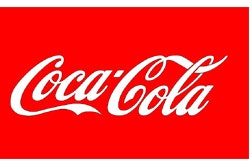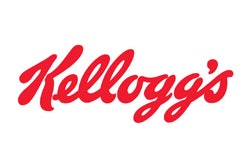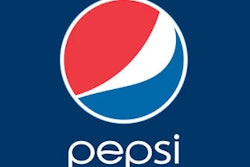A snack food manufacturer with multiple brands ran into problems when it tried using a laser-based barcode scanner to direct boxes to different shipping areas. The height of the boxes made it necessary to position the scanner at an angle a considerable distance from the labels, resulting in read rates of only 20 to 30 percent. The manufacturer assigned an employee fulltime for three shifts to manually divert the boxes when barcodes weren’t read by the existing laser scanner. The company also had to deal with the consequences of incorrectly filled orders, such as returned product that could not be resold.
The company solved the problem by switching to a DataMan 500 image-based barcode reader from Cognex. This device, which can read any label at any orientation within its 12-inch by 12-inch field of view, improved the read rate to 100 percent even though it reads from the same location as the previous laser-based scanner. The DataMan 500 saves the company the cost of three full-time employees as well as the losses incurred by returned products, accounting for a total savings of approximately $250,000 annually. The snack food manufacturer is now considering using DataMan 500 readers on other packaging lines as well.
Difficult location for laser-based barcode reader
The snack food manufacturer packages its individual serving products in boxes that are 3-feet wide by 2-feet by 1.5-feet tall. The boxes travel down a conveyor line to a diverter chute where they are sorted for shipping. Barcodes on the boxes, which are placed at varying locations and orientations, are read during a brief pause of the conveyor right before the diverter chute. That information is then sent to an Allen Bradley programmable logic controller (PLC) that tells the diverter which direction to send the box.
The company chose its previous laser-based barcode scanner after seeing a demonstration, but soon found that the laser solution would not work because of perspective distortion and the relative size of code versus distance. The laser scanner was positioned 36 inches away and mounted at a height of 36 inches and aimed downward at an approximate 45-degree angle to the inspection surface. Because of the distortion caused by the mounting angle, as well as the distance from the barcode, the laser-based scanner was getting read rates of only 20 to 30 percent.
The company addressed the problem by stationing an operator at the diverter to manually direct boxes to the correct locations when their barcodes weren’t read. Because the manufacturer runs three shifts per day, the inefficiency of the laser-based scanner cost the company an estimated $100,000 per year for the three full-time positions. And because this approach sometimes resulted in boxes going to the wrong locations, orders were occasionally filled incorrectly, resulting in returned products that could not be resold. Losses attributed to these mistakes were estimated at $150,000 annually.
Image-based barcode reader overcomes limits
Crescent Electric Supply Company, a distributor and Automation Solution Provider (ASP) for Cognex based in Cleveland, Ohio, came up with a better approach. “I knew the minute I looked at their setup that there was no way a laser-based scanner would work,” said Rick Rasbitsky, an application engineer at Crescent Electric.
What he proposed instead was a different technology for capturing the barcodes, specifically an image-based reader called the DataMan 500 from Cognex. The idea behind image-based technology is that the reader captures an image and uses a series of algorithms to process the image to make it easier to read. A typical algorithm searches the entire image for the code and identifies the position and orientation of the code for easy reading. Other algorithms handle degradations in code quality due to differences in material types and surfaces.
Although the DataMan 500 can capture 2-D matrix barcodes, the snack food manufacturer only needed it for 1-D codes. The DataMan 500 uses a new 1DMax+™ algorithm, which incorporates Hotbars™ technology to handle difficult ID code-reading applications on high-speed lines. Hotbars uses texture to locate barcodes at any orientation and then extracts high-resolution 1-D signals for decoding. The Hotbars finder analyzes a raw source image and produces a list of regions where it is likely that an ID code exists along with the orientation and other properties of the code. Hotbars technology then extracts 1-D signal using as a mathematical foundation a model of the pixel grid itself that reduces blur while maintaining accuracy and noise reduction.
Rasbitsky configured a DataMan 500 with a 50 mm lens and mounted it exactly where the laser-based scanner had been. He also installed an external blue light (SV75) at a low angle to the box to better illuminate the 12-inch by 12-inch area of inspection, and then connected the DataMan 500 to the Allen Bradley PLC. The entire set-up process took about six hours.
100 percent read rates from day 1
Because of the bad experience with the laser-based scanner, the snack food company’s management was skeptical that the DataMan 500 would work, recalled Rasbitsky. But from the moment it started operating, it produced a 100 percent read rate. “The snack food company was surprised and also very pleased,” said Rasbitsky. “The device reads correctly 100 percent of the time, no matter where the labels are positioned or how they are oriented.”
The company has no problem operating and maintaining the DataMan 500 on its own, thanks to Cognex VisionView control software, noted Rasbitsky. “VisionView is always on and it sees what the DataMan sees,” he explained. “It gives a visual indication showing that it has read each barcode as the boxes pass through. It also gives the maintenance guys an easy way to refocus the DataMan 500, in case they have to move it out of the way for any reason and then put it back in place.” Focusing the reader is the simple matter of adjusting two knobs on the DataMan 500 — a focus ring and an aperture adjustment — and then looking at the VisionView display to confirm the focus.
Since replacing the laser-based scanner with the DataMan 500, the company has eliminated the cost of having one employee per shift manually divert boxes. They also avoid shipping products to the wrong locations, eliminating the losses previously caused by returned products. Management is so pleased with the DataMan 500 that they are planning to purchase additional devices for other packaging lines.
For more information, contact Cognex, One Vision Drive, Natick, MA 01760-2059 USA. Tel (Toll Free): 1-877-COGNEX1 (1-877-264-6391), Fax : +1 508 650-3344, Email: [email protected],Web: http://www.cognex.com/























